AnandTech Year In Review 2019: Lots of CPUs
by Dr. Ian Cutress on December 27, 2019 4:00 PM EST
Throughout 2019, we’ve had quite the reverse of performance when it comes to the competitiveness of the modern performance-oriented desktop processor. This year we’ve seen AMD introduce its Zen 2 processor designs, offering up to 16 cores for mainstream use cases, and matching if not beating Intel in raw clock-for-clock performance. In a similar vein, AMD’s Rome CPUs offer up to 64 cores per socket on the server side, where Intel can only offer 28 (or 56 in some configurations), while at the same time both consumer and server pushing PCIe 4.0 in preparation for upcoming GPUs and add-in accelerators. Intel has also launched a number of products, such as a couple of 5.0 GHz all-core CPUs, an unlocked 28-core CPU, Xeon 9200, and the next generation of server products.
If you’ve been away from the CPU space this year, here’s the Year in Review.
January 2019
In early January we attended the annual CES trade show in Las Vegas. It was the start of many keynotes for AMD’s CEO Dr. Lisa Su this year, which also included Computex, E3, Hot Chips, and various AMD partner events.
The AMD Keynote at CES 2019: Looking Ahead
Part of the keynote was that AMD was committed to delivering on its 7nm CPU platform later in the year, particuraly with its Zen 2 architecture, showing some very impressive benchmarks including an 8-core AMD vs 8-core Intel running a benchmark, scoring similarly, with the AMD at a quantifiably lower system power. We also got the first look at the 8-core Matisse package, along with predictions for a dual-die package offering up to 16-cores. At this point AMD was keeping quiet on core counts.
Intel’s keynote by contrast was the first since the new interim CEO, Bob Swan, had taken over. It wouldn’t be until later in the month that he would be confirmed as the full-time CEO, but unlike the previous CEO, he wasn’t on stage. Instead, SVP Greg Bryant was up to talk about how Intel had launched a CPU offering a 2-core 5.0 GHz turbo (the i9-9900K, in October 2018), but also spoke about how Intel was committed to delivering 10nm in 2019 through its mobile Ice Lake platform, new 3D stacked ‘Lakefield’ chip, and in 5G with its Snow Ridge design.
Intel’s Keynote at CES 2019: 10nm, Ice Lake, Lakefield, Snow Ridge, Cascade Lake
Most of this was based on Intel’s Architecture Day, which was only a few weeks prior in December 2018. At CES Intel also discussed its future for the server market with a brief coverage of Cascade Lake and also Intel’s AI options for that particular market.
Also at hand was Intel’s Project Athena, which Intel had launched last year, with the idea to create a level of requirements for mobile devices to guarantee performance, battery life, and other features that Intel believes its high-end customers need.
Also at CES, we learned of a new CPU that Intel didn’t want many people to know about. The Core i9-9990XE was meant to be a special processor kept under wraps. With 14 cores all rated at 5.0 GHz, this super binned chip (according to partners) would only be available to Intel’s key partners through an auction only process. Not only that, but these CPUs would be sold to the partners without any warranty. End-users who would want these parts include high-frequency traders who want the best of everything and can amortize the costs. We ended up reviewing the hardware later in the year.
Intel Core i9-9990XE : Up to 5.0 GHz, Auction Only
As for CPU launches in January, Intel was the main player here. In order to boost the launch of its 9th Gen Core K-series processors from October 2018, the company launched its 9th Gen F-series hardware. F-series parts lacked integrated graphics, so we expected them to be cheaper, but they were listed on Intel’s pricing at the same price as the K parts that did have integrated graphics (later in the year the price did eventually change). Along with the F parts were KF parts that offered both overclocking functionality but no integrated graphics.
What we also got to see in January 2019 was the Xeon W-3175X: Intel’s fully-unlocked 28-core beast of a processor. Intel shipped a number of press a full system to test this chip on, which included a rather beefy three-fan liquid cooler, an exhuberant $1500 motherboard, and a 1500W power supply. All in all, the test-kit for this CPU was $7000+, including the price of the processor, which was a cool $2999.
The Intel Xeon W-3175X Review: 28 Unlocked Cores, $2999
As perhaps was to be expected, it knocked the socks off of any of the other processors we’ve ever tested, even putting some dual-socket configurations to shame with its high core count, high frequency, and perhaps not surprisingly, high power draw. Only two motherboard vendors even dared to build boards for it, ASUS and GIGABYTE, with only ASUS ready for launch day. EVGA eventually built a board too, when the product stack filled out a bit, but ultimately we were told by these companies that they expected the W-3175X to be sold mostly through system integrators.
One of the final reviews to round off the month from us was our Cannon Lake review. Intel had ‘officially’ shipped its first 10nm CPU products in December 2017, but they were no-where to be seen. Despite repeated requests to find out where this mythical CPU had gone, we found a few in China, with Lenovo producing a product for the education market. We pulled a few strings and got this Cannon Lake laptop in, and gave it a good teardown as well as a full architecture analysis.
Intel's 10nm Cannon Lake and Core i3-8121U Deep Dive Review
Cannon Lake, Intel’s first generation 10nm product, shipped in a dual core design with a disabled GPU (because it didn’t work). It was more power hungry than the previous generation 15W laptop designs, and the parts that ended up in the market were undoubtedly salvaged to make it look like it was ready to go. Cannon Lake will forever remain a curio for CPU enthusiasts, and that’s where it should stay.
Right at the end of the month we had some good news. Intel had finally put the Itanic to bed. Intel’s Itanium product, initially launched in 2000, deployed the ‘Itanium’ architecture for high-scale enterprise servers. The last generation of products, called Kittson, were released in 2017 but even then were only a frequency bump over the 2012 Poulson products.
The only company still deploying Itanium was HP, and January 2019 marked the start of the End-of-Life cycle for this hardware. HP (and others) have until January 30th 2020 to make the last orders of CPUs, which will be shipped by July 29th 2021. But as it stands, with no roadmap and no more support, the Itanic has finally bubbled its last puff of air.
Intel to Discontinue Itanium 9700 Kittson Processors, the Last of the Itaniums
We also reviewed the AMD Athlon 200GE against the Intel Pentium G5400, in a battle of $60 hardware.
The $60 CPU Question: AMD Athlon 200GE or Intel Pentium Gold G5400? A Review
February 2019
No CPU launches to report from February, although discussions about Intel’s ability to provide enough consumer CPUs into the market were slowly rising. Having only launched 9th Gen Core hardware for K/F/KF processors and not a full stack had people confused as to where Intel was going with the 9th Gen Core family.
What we did at AnandTech was review a couple of special OEM-only parts from AMD. The Ryzen 5 2500X and Ryzen 3 2300X were technically announced in September, but due to their OEM-only status (and perhaps a bit of region-specificity going on), they could only be obtained in specific pre-built systems from HP, Lenovo, or other big vendors. We managed to get hold of the chips to compare their performance.
The AMD Ryzen 5 2500X and Ryzen 3 2300X CPU Review
It did strike us as odd as to why AMD doesn’t widely distribute them. Potential reasons include that these cut down parts are limited in number, or AMD wanted to drive up the average selling price of its processors on the market – a tactic used by a lot of companies. At this point it was unclear, and as we’ll read further, AMD did something a bit similar with the Ryzen 3000 family.
March 2019
March was also a relatively quiet month, with nothing happening on the consumer processor front. There were lots of predictions about AMD’s upcoming 7nm hardware, although nothing out of AMD itself.
What AMD did finally put into retail was a high-speed version of its then current-generation Naples server hardware based on its Zen microarchitecture. The AMD EPYC 7371 was a 16-core part that pulled an extra 30 W (200 W vs. 170 W) but enabled a much higher base frequency (3.1 GHz vs. 2.3 GHz) and turbo frequency (3.8 GHz vs. 2.9 GHz) than any other EPYC on the market. Beyond that, AMD stated it had a 3.6 GHz all-core turbo.
AMD Launches High-Frequency EPYC 7371 Processor
While the product was announced in November 2018, it actually was made available in February 2019. While we didn’t get to review the product directly, our friend Patrick Kennedy at ServeTheHome did do a review and said that it offered AMD’s most competitive EPYC server product to date, easily replacing dual 8-core systems from Intel (a common configuration) with a single chip.
April 2019
While the leaks and rumors are still flying for AMD’s Zen 2, April was all about Intel.
Intel’s big announcement for the month was the launch of its new enterprise processors. The second generation of the Xeon Scalable line is called Cascade Lake, and the key updates here are not only the first round of hardened security updates for Spectre/Meltdown, but Intel also adjusted the core counts at specific price points to offer 25% more cores for the same price. The new processors also support Intel’s Optane DCPMM, which allows for up to 4.5 TB of memory per socket with specific SKUs.
Intel’s Enterprise Extravaganza 2019: Launching Cascade Lake
The socketed Cascade Lake hardware matched the previous Skylake in terms of peak core counts (up to 28), and IPC was almost equal as well, with Intel leveraging increases in core counts and small frequency lifts to give overall frequency improvements.
We also saw the Xeon 9200 family being launched. This new line, sitting above the Cascade Lake Platinum 8200, essentially puts two 28-core silicon dies onto a single package. These chips aren’t socketed, and require to be soldered on board, but essentially act as a dual-socket processor in a single socket (albeit, at 1/3 of the link speed). Intel made these chips in order to offer high-density systems (224 cores in a 1U), but also to counter the upcoming the 64-core option from AMD.
Hands on with the 56-core Xeon Platinum 9200 CPU: Intel’s Biggest CPU Package Ever
Also on the books first was the Xeon D-1600 series, a network focused lower core count embedded chip for the edge market - a sort of baby brother to the D-2100 series.
Intel Launches the Xeon D-1600 Family: Upgrades to Xeon D-1500
For consumers, the release cycle meant that Intel started putting 45W TDP versions of the 9th Gen Core family into the market, for both desktop and mobile. Finding them on desktop since the launch has been rather tricky (and seemingly location specific).
Intel 9th Gen Core Processors: All the Desktop and Mobile 45W CPUs Announced
May 2019
At the beginning of May, we started to bid farewell to one of Intel’s most ambitious projects. Originally derived from Intel’s attempt to make an x86 graphics chip called Larrabee, Xeon Phi had been on the run as a many-core design focused in high-performance computing, namely due to its 72 AVX-512 units. The last product announcement for Xeon Phi had the 10nm product going into the Aurora supercomputer, but Aurora is now getting Intel’s new XeHPC GPU instead, called Ponte Vecchio. For Xeon Phi, the last generation that was given life was Knights Mill, which was almost identical to Knights Landing except for an optimization to go to AI.
The Larrabee Chapter Closes: Intel's Final Xeon Phi Processors Now in EOL
Xeon Phi was an interesting product that slowly became obsolete as Intel introduced AVX-512 on its main Xeon Scalable family of processors with dedicated AI instructions. With Knights Mill now being ushered into its End-of-Life program, the chapter on Larrabee has finally closed, with the company now set to launch a range of GPUs up and down the stack with its new Xe architecture.
A side note on other Intel news: technically the company released its Xeon E-2200 family of CPUs in May as well. These are the Xeon analogues to the Core 9th Gen hardware, except with enterprise features like ECC and vPro by default.
Intel Launches Xeon-E 2200 Series for Servers: 8 Cores, up to 5.0 GHz
The end of the May/beginning of June is our annual trip to Computex, and Dr. Lisa Su took to the stage for AMD’s keynote. AMD for the first time gave everyone details about the next generation of Ryzen: Ryzen 3000 built on 7nm chiplets using Zen 2 microarchitecture. In the disclosures, AMD covered its new 8-core products, as well as its new flagship Ryzen 9 3900X with 12 cores using two chiplets, as had been theorized by the previous CES disclosure.
Dr. Lisa Su at Computex 2019: AMD Keynote Live Blog
Of course, everyone was asking two things: (a) what’s new in Zen 2, and (b) where’s the 16-core ? More on that later in the year.
Intel also had its usual keynote for Computex, with Greg Bryant taking the stage. Last year the company had an upset where it showed a 28-core 5.0 GHz CPU without mentioning it was overclocked (and seemed very cagy about it at the time). This year there were no such hangups, and the company announced the Core i9-9900KS. This 8-core 5.0 GHz CPU actually does 5.0 GHz on all cores out of the box, without the need for exotic cooling.
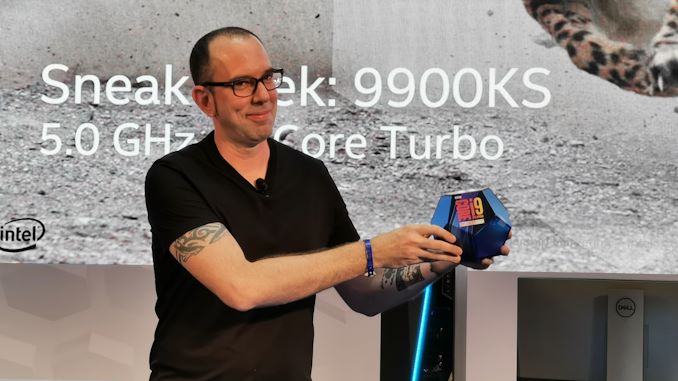
Presented by Jon Carvill, now ex-Intel
Intel Announces 8 Core i9-9900KS: Every Core at 5.0 GHz, All The Time
Intel didn’t state a release date at the time (it ended up being October), nor a price, with the price expected to be high. It sounded like obvious competition for AMD’s 12-core and 16-core, so it did create quite a lot of traffic.
At Computex, Intel also mentioned that its next generation of X-series processors (Cascade Lake-X) would be coming to the high-end desktop market later that year, as would its 10nm Ice Lake laptop processors. This would coincide with the official release of the Project Athena 1.0 laptop specifications.
Computex 2019: Intel Keynote with Gregory Bryant
The full SKU list for Ice Lake was released, covering 9W, 15W, and 28W hardware. To date (as of Dec 2019), we still have only seen the 15W hardware come to market, so we are expecting to see 28W and 9W parts in Q1 2020. The big uplift for the high-powered parts is in the graphics, offering up to 64 EUs of the new Gen11 graphics. We got a chance to benchmark an early preview in August.
One other thing we found at Computex. We know from the previous year that AMD had done a deal to create a joint venture in China with a Chinese company called THATIC. This joint venture had a license to request changes to the Zen 1 architecture, which AMD would approve, and then they could be manufactured by the joint venture. These ‘Hygon’ processors were built under license specifically for the Chinese market, and even today at the end of 2019 it’s rare to even see one, let alone touch it or test it. At Computex, we found one to look at.
Spotted at Computex: Let Bygones be Bygons, with a Sugon Hygon
Interestingly enough, we got the bottom right of the CPU translated. A literal translation is
'Using Cores to Calculate The Future'
However, the second character used in the slogan is a homonym, which could be translated as:
'Using Passion to Calculate The Future'
For a Chinese CPU, the synergistic phrasing is very poetic. Sugon, despite never having interacted with AnandTech before, asked us to take down our short article, and set us some odd documents that had nothing to do with AnandTech. The partner who had the CPU at the booth no longer speak to us. That’s how ‘sensitive’ a Hygon is. As part of our Computex coverage, we asked AMD about these parts, about what is different – we were told ‘if you test one and find something out, let us know and we might confirm it’. Perhaps this is a good time as any to mention that we have some Hygon for testing, and found some very distinct differences to Zen 1. Stay tuned in early 2020 for our review.
As part of our Computex coverage, we were also given the opportunity to participate in a roundtable with AMD's CEO, Dr. Lisa Su, and quiz her on the shows announcements. The questions in this interview are varied, due to the nature of a roundtable discussion rarely staying on the same topic, but Lisa offered some good gems of info.
All Ryzen: Q&A with AMD CEO Dr. Lisa Su
June 2019
Technically Computex rolled into June, but also at the beginning of June is E3. Normally AnandTech doesn’t cover E3, however AMD decided to have a big 2-day NDA tech event just before the show started. This is usual before a big launch, and usually it’s a struggle for the company that does the tech event to keep everyone quiet in advance. Nonetheless, AMD took the time to go through the new Zen 2 microarchitecture in-depth, with key architects on hand to answer questions. So after the first full day of presentations, we only had 10 hours between the end of the presentations and embargo lift. I swore to some $deity that I was destined to have it written up in time. Here’s my 7000-word analysis of AMD’s Zen 2 microarchitecture.
AMD Zen 2 Microarchitecture Analysis: Ryzen 3000 and EPYC Rome
Aside from making the core wider, AMD had increased the micro-op cache size, introduced a new style of branch predictor, fully enabled dual AVX2 pipes, improved the load/store balancing, and a better efficiency by using 7nm for the cores but 14nm for the IO die. AMD claimed a direct +15% performance uplift from Zen1 to Zen2, which would put it directly in the firing line with Intel’s Skylake (now Coffee Lake) 14nm++ processors for raw clock-for-clock performance. Promising a release date of 7/7 (because 7nm), everything was heating up, to the point where people were now starting to ask about Threadripper.
During the E3 event, AMD also announced that alongside the 8-core and 12-core hardware, it would be launching a 16-core counterpart, the Ryzen 9 3950X. This didn’t really surprise anyone, except for its low TDP (only 105 W, 10 more than the 12-core), and the fact it was listed as having the highest single-thread frequency of any Ryzen 3000 chip. AMD listed it as ‘coming September’, but it ultimately came out at the end of November due to unprecedented demand of 7nm chiplets.
AMD 16-Core Ryzen 9 3950X: Up to 4.7 GHz, 105W, Coming September
To cap off the Computex/E3 announcements, Wendell from Level1Techs and I sat in our hotel in Los Angeles to talk about the announcements and our opinions of them, for his channel. Video is embedded below.
Fireside Chat with Ian and Wendell: Ryzen 3000, Zen 2, Navi, Xeon W
The rest of the month of June was all for Intel. The company finally launched the rest of its 9th Gen Core processor stack, filled with non-K and non-F processors, as well as Pentiums and Celerons. There were no real surprises in frequencies or properties of these CPUs, almost mirroring what we saw on the 8th Generation hardware with small frequency adjustments and identical pricing.
We also saw Intel launch the Xeon W-3200 series on the back of the new Mac Pro launch. The W-3200 family uses Intel’s LGA-3647 socket, and becomes a cheaper way to enable a 28-core workstation without going down the Xeon Scalable route. Intel also started to offer the Xeon W family with M versions for middle-tier memory support, allowing the maximum amount of memory to be supported go up from 1 TB to 2 TB (for an extra $3000).
Intel Cascade Lake Xeon W-3200 Launched: Server Socket, 64 PCIe 3.0 lanes


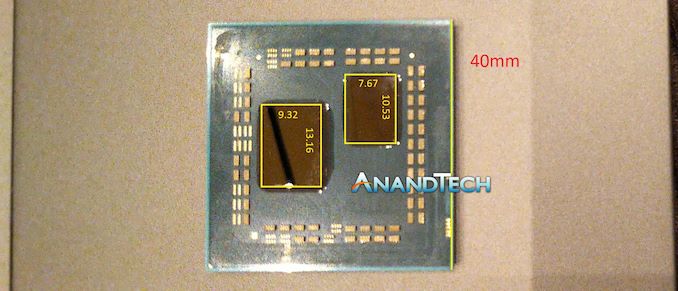


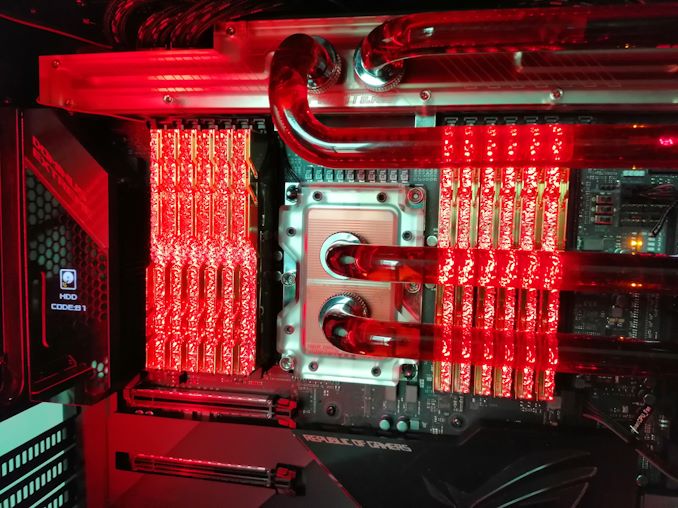





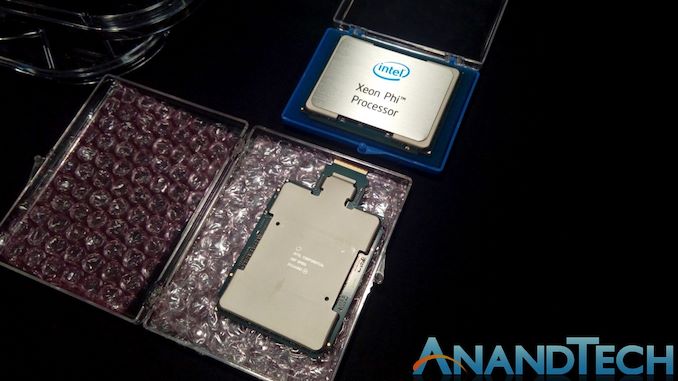
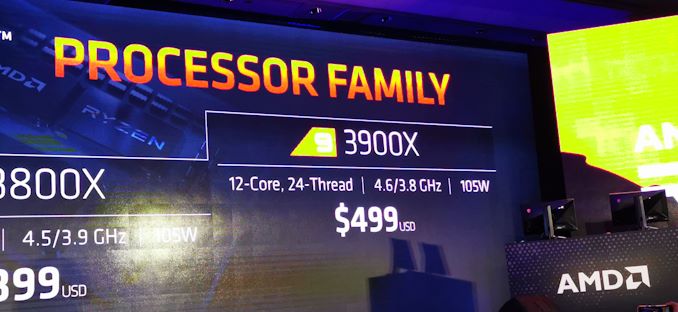
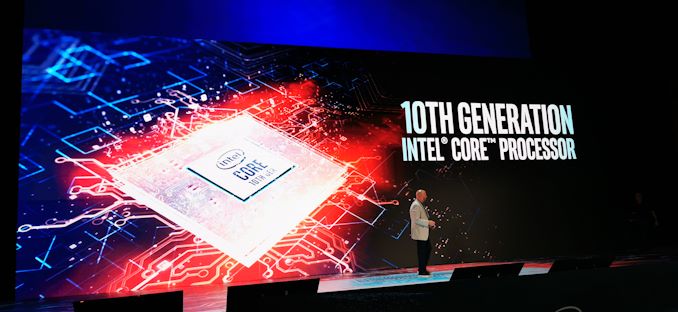
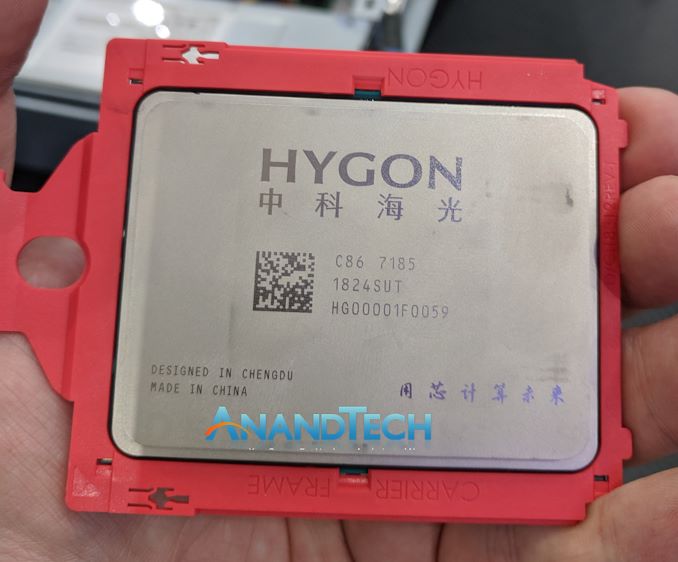

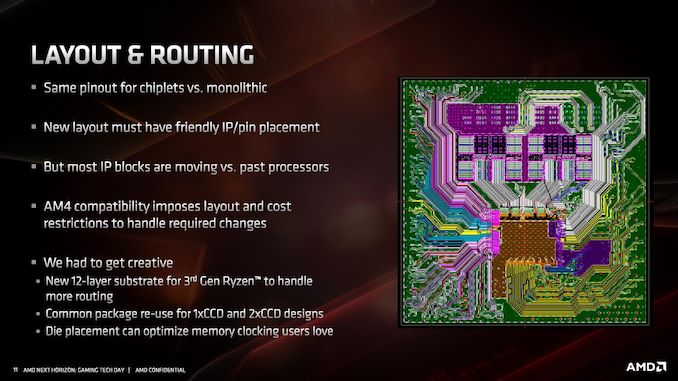
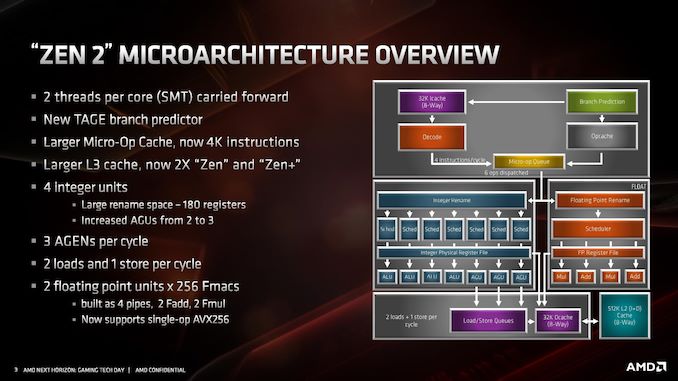
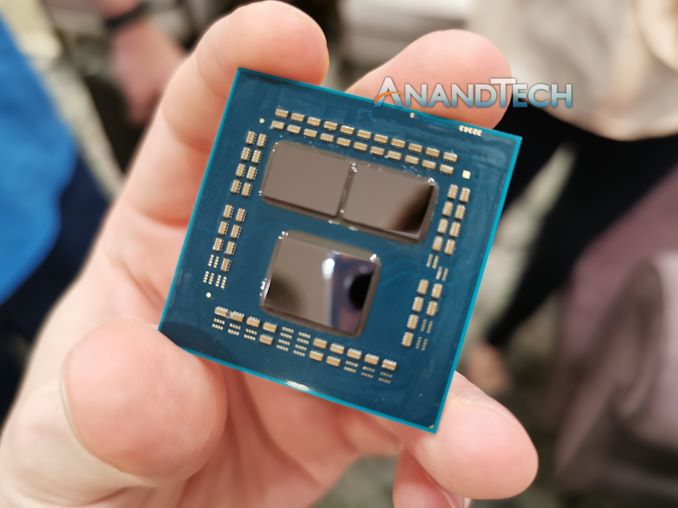









24 Comments
View All Comments
Drumsticks - Friday, December 27, 2019 - link
It is pretty wild how much happened in the CPU world this year. Zen 2 feels like it's been out and impacting the market for ages, but it's only been around for six months. Can't wait to see Zen 3 sometime next year. It's going to feel like an eternity before Intel meaningfully competes, if the rumors about comet lake are true (10 core skylake). Rocket Lake is more up in the air, if that can come out soon enough and truly be a good step forward, maybe we'll get some excitement in the space before AMD falls asleep.Competition is good!
flyingpants265 - Friday, December 27, 2019 - link
Zen2 is great, but Ryzen 2600 is an even better value than before. Just picked one up for $80 USD (second-hand).Basic motherboards are available for like $80 or less, brand new. I picked up Team Vulcan 16GB 3000mhz for $46 USD on boxing day. That's a CPU, motherboard and RAM for just over $200.
If you have a spare case/PSU, you can whip up a whole 2600/16GB/5700 system for like $550.
zepi - Friday, December 27, 2019 - link
Maybe two more pictures should be added:AMD stock price from 1.1.2019 to 27.12.2019
And the equivalent of Intel.
Both are up considerably, but Intel had a very bumpy ride and ultimately AMD gained more.
rahvin - Friday, December 27, 2019 - link
It's not meaningful to the article. All of the tech sector stocks are up as we're likely in a bubble, IMO a very big bubble.MBarton - Monday, December 30, 2019 - link
Intel stock has been heavily aided by the fact that Intel has been buying back stock. Buybacks are the biggest reason their valuation hasn't fallen.Stochastic - Friday, December 27, 2019 - link
2019 was the year of the CPU, and I'm guessing 2020 will be the year of the GPU.MBarton - Monday, December 30, 2019 - link
2020 holds the biggest CPU showdown yet when Zen 3 arrives. Zen 2 helped bring AMD into parity. Zen 3 will be the standout CPU of 2020.DanNeely - Friday, December 27, 2019 - link
"Sugon, despite never having interacted with AnandTech before, asked us to take down our short article, and set us some odd documents that had nothing to do with AnandTech. "Now I'm intrigued; I really hope you're able to elaborate on this when you publish your article about the chip next year.
Kishoreshack - Saturday, December 28, 2019 - link
Why no Zen 2 Mobile CPU from AMD?Either AMD isn't interested in mobile CPU's
or the delay is cause of TSMC
Korguz - Saturday, December 28, 2019 - link
or they are working on it. seems the release for zen2 based APUs is early 2020